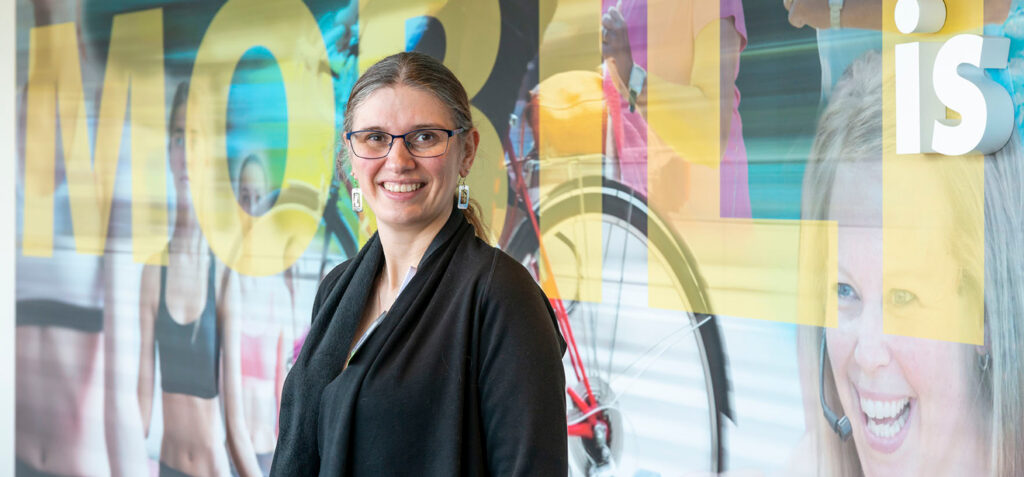
June 9, 2022
After Struggles with Rare Disorder, Donor and BJI Researcher Unite to Help Others Overcome It

People living with Ehlers-Danlos syndromes (EDS) can spend years searching for a diagnosis. Caused by abnormalities associated with collagen, EDS symptoms range from mildly loose joints to scoliosis and other joint deformities. A more severe form of the disorder, vascular Ehlers-Danlos syndrome, can cause the walls of blood vessels, intestines, or uterus to rupture. The range of symptoms and the many forms of Ehlers-Danlos make comprehensive diagnosis and treatment for the overall condition elusive.
An anonymous donor who spent most of her adult life searching for the cause of her digestive problems before Hartford Hospital physicians diagnosed EDS hopes to change that. Through a generous gift supporting research at the Hartford HealthCare Bone & Joint Institute, she intends to help those living with EDS and related disorders.
“With each new diagnosis, lives will improve,” she said. “More consistent diagnosis, management, and care, as well as bringing a heightened awareness among the medical community are the goals. We want doctors to be able to help identify the signs and symptoms and provide a centralized treatment center for those suffering with this syndrome.”
Hartford Hospital’s Vice President of Philanthropy Lynn Rossini said, “Gifts like these are so important to the care that Hartford Hospital and Hartford HealthCare provide. When a donor shares our mission and vision to improve the health and healing of the people in our community, we are beyond grateful. The research this gift is supporting will change lives.”
The Hartford HealthCare senior scientist leading the research understands the challenges of EDS firsthand. “I always had horrible joints,” says Sara Strecker, a biomedical sciences PhD with extensive orthopedic experience. “I started seeing an orthopedist when I was 6 years old. So, I always knew I was really bad at sports, very hyper-flexible, very clumsy. I would always get hurt. But I didn’t have a name for it.”
By the time she was in college, Strecker still didn’t have a name for her problems, but she was surprised to find she wasn’t alone in her struggles with repeated joint dislocations.
“One day, I popped out my elbow, which happens to me more than I care to admit,” Strecker said. “As I’m sitting there in the dorm room trying to put my elbow back, [my roommate] is looking at me and says, ‘Oh, try this technique.’ That’s when we realized we both had the same condition.”
Strecker and her roommate were diagnosed with EDS about a year apart. Still, the connective-tissue disorder is so unusual that patients are often misdiagnosed. Strecker says there are about 500 unique EDS patients within the Hartford HealthCare system. “It’s suspected to be potentially even higher, potentially up to 2% of the population is affected. So, there’s a large community in Connecticut,” she said.
People with the hereditary condition deal with joints slipping in and out of place, skin that can be stretched further than usual, digestive system symptoms, abnormal scarring, and other structural weakness such as hernias and organ prolapse through the pelvic floor. Patients can spend years bouncing between specialists trying to determine the cause of their symptoms.
Strecker said her research has so far focused on the perspective of physicians. She is working on CME accredited presentations for physicians to learn more about the disorder.
“With this generous donation, we can start looking at data analysis,” she said. “We can start looking at bone density and muscle mass in these patients. We’re going to look at incidences of GI dysfunction, incidences of anxiety and depression, incidences of the use of acupuncture or other alternative therapies. So, we can do a whole lot more projects now that we have some funding at our fingertips.”
